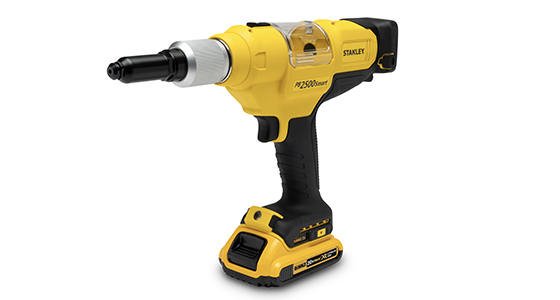Rivet guns are durable tools, but just like any piece of equipment, they require regular maintenance to ensure long-term performance. Whether you're a DIY enthusiast or a professional, taking care of your rivet gun is crucial to getting the best results from every project. Here are 5 essential maintenance tips to keep your rivet gun running smoothly.
1. Regular Cleaning
One of the easiest ways to maintain your rivet gun is by keeping it clean. After each use, wipe down the tool to remove dust, dirt, and debris that can clog moving parts. Make sure to clean the nosepiece, as it's the part that comes into direct contact with the rivet. If the tool is too dirty, it can affect its performance, leading to jams or improper rivet setting.
How to Clean:
- Use a soft cloth to wipe down the exterior.
- Use a small brush (like an old toothbrush) to scrub hard-to-reach areas.
- For stubborn dirt, you can use compressed air to blow it out of the internal parts.
2. Lubrication
Proper lubrication is key to ensuring smooth operation and reducing wear on the moving parts of your rivet gun. Lubrication helps reduce friction, preventing premature damage to the tool. Be sure to use the right kind of lubricant, typically a lightweight oil or grease, to keep the internal parts running smoothly.
Where to Lubricate:
- Apply lubricant to the trigger mechanism, jaws, and other moving parts.
- Make sure not to overdo it, as excess lubricant can attract more dust and debris.
3. Inspect for Wear and Tear
Even the best rivet guns will experience wear and tear over time. Regularly inspect the tool for any signs of damage or degradation. Pay close attention to the jaws, the nosepiece, and the handle. If any part looks worn out or cracked, it may need to be replaced to avoid compromising the tool's effectiveness.
What to Look For:
- Cracks or chips in the jaws or other high-stress parts.
- Loose screws or bolts.
- Worn-out seals or gaskets (for pneumatic models).
4. Check the Rivet Sizing Mechanism
For rivet guns with adjustable settings for different rivet sizes, make sure the mechanism is working correctly. Over time, the rivet sizing mechanism can become misaligned, leading to inaccurate rivet placement. Regularly check that the mechanism is adjusting properly and that the tool is compatible with the rivets you are using.
How to Check:
- Test the rivet gun with various rivet sizes to ensure it operates smoothly.
- If you notice any issues with adjustment, consult the manufacturer’s guide for troubleshooting.
5. Proper Storage
How you store your rivet gun plays a huge role in its longevity. Always store your rivet gun in a dry, cool place to prevent rust and corrosion, especially if it’s a pneumatic or electric model. Avoid leaving it in areas with high humidity, as moisture can damage both the internal and external components.
Storage Tips:
- Store the rivet gun in a protective case if possible.
- If you’re storing it for an extended period, make sure it’s free of dust and properly lubricated.
- Keep it in a spot where it won’t be knocked around, as this could cause damage.
Conclusion
By following these 5 essential maintenance tips, you can ensure that your rivet gun continues to perform at its best for years to come. Regular cleaning, lubrication, inspections, and proper storage are all key practices that will help you avoid costly repairs and improve your overall efficiency. Take care of your rivet gun, and it will take care of your projects.





Comments